Watching is the most direct and important way of interacting with VR glasses. When we get a pair of glasses, the first thing we experience is visual effects. But for visual effects, the understanding of many users is limited to the field of view (FOV). When purchasing VR glasses, users often think that the larger the field of view, the better. In fact, for a VR glasses, the field of view is only one aspect of the visual experience, and there are many other factors that determine the visual experience of a VR glasses.
Huawei official blog released a message yesterday, the Huawei VR glasses that appeared at the press conference will be sold for the first time today (December 15), priced at 599 yuan. Also on sale is Huawei's new mobile phone product Mate 9 Pro.
Then we analyze the elements that a good VR should have to analyze Huawei VR to bring to the people!
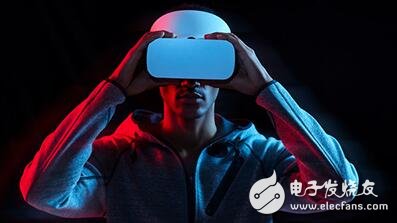
Everything starts from the angle of view
Since the field of view is the most intuitive indicator of VR glasses, then we start from the field of view.
Field of view, English is Field Of View, referred to as FOV. In a display system, the angle of view is the angle between the edge of the display and the point of view. The following two figures are illustrated: the angle between the two screen edges of AD and BC and the human eye in Figure 1 is the horizontal angle of view. Similarly, the angle between the upper and lower screen edges of AB and DC and the human eye. It is the vertical field of view; in addition, the diagonal field of view can be defined as shown in Figure 2. The angle formed by the three points of DOB is the diagonal field of view.
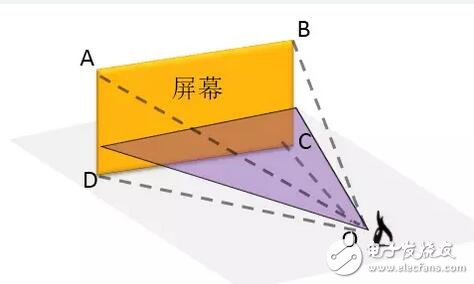
Horizontal field of view
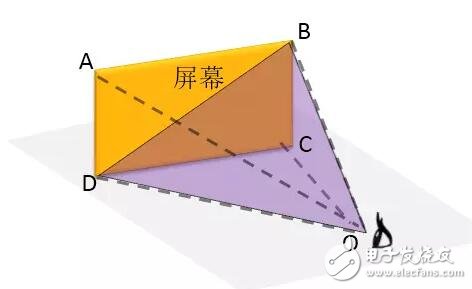
Diagonal field of view
In VR glasses, all images are emitted from the screen and presented to the user's eyes through a lens. The field of view claimed by the VR manufacturer refers to the field of view of the lens in the VR glasses. For example, in the figure below, when we watch VR, we turn the eyeball up and down. The angle between the highest and lowest two rays that are reflected by the lens after the screen can be seen is the angle of view defined by the VR product.
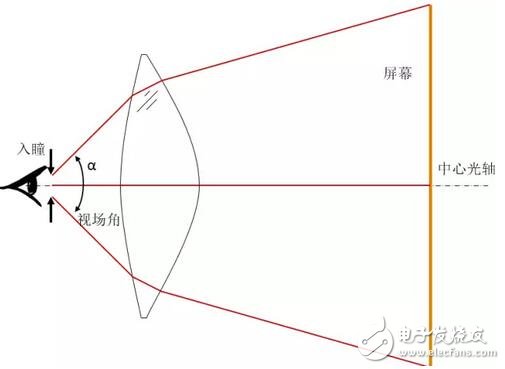
VR field of view
Imaging principle of VR glasses
The lens is an indispensable device in VR glasses. Why do you have to look through the lens? Because the human eye has a viewing range. For a person with normal vision, the distance that can be seen is about 14cm to infinity; for myopia, the range is narrowed and reduced. For example, for people with 500 degrees of myopia, he can see the range of about 8cm to 20cm. We call these two points the near point and the far point, which are too close or too far to see.

Human eye's viewing range, near point and far point
For this reason, when using VR glasses, we also need to put the screen in this effective viewing range to view properly. In VR glasses, the distance between the screen and our glasses is only 3-4 cm, which is much smaller than the normal near-point distance. Therefore, it is necessary to refract light through a convex lens to make the image on the screen form a larger and farther virtual image. This virtual image is within the range we can effectively watch.
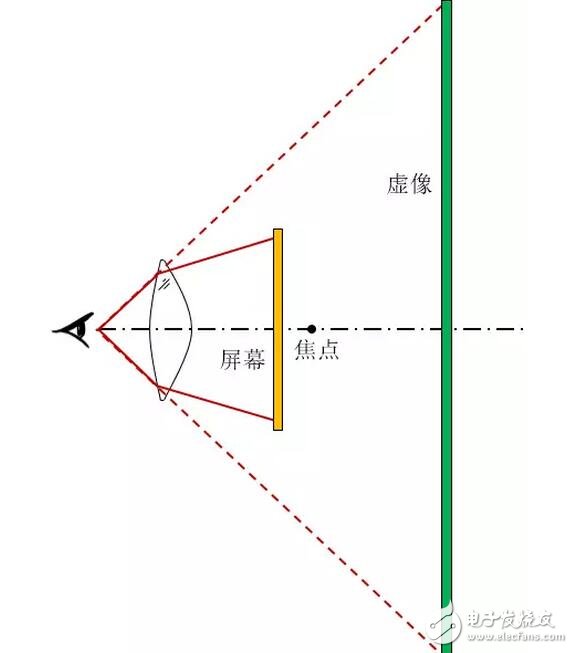
VR imaging principle
Another function of the lens is to enlarge the original 5-6 inch mobile phone screen by a few hundred or thousands of inches to form a huge picture. The immersion that VR promotes also comes from this. When wearing VR glasses, it isolates the outside world, leaving only a huge image of the simulated world in front of you, naturally creating an illusion in another world.
In VR glasses, the magnified image provides the user with a sense of immersion, and the left and right split screen displays the image with parallax, which brings a virtual 3D feeling. When the human eye is watching an object, the images seen by the left and right eyes are not exactly the same. We call it parallax. The image with parallax seen by the left and right eyes is transmitted to the brain, and the brain can determine how far the object is from us. The closer the parallax of the object is, the more obvious it is. This can be detected by looking at the left or right eye alone. If the object is in an area that we can see in both eyes, we can accurately determine the distance of the object; and if we only rely on a single eye to see an object, this sense of distance is often not as accurate. VR glasses separate the left and right screens, respectively presenting left and right images with parallax, which are simply objects at different distances from us, with different parallax on the screen. This way we have a virtual 3D feel when watching.
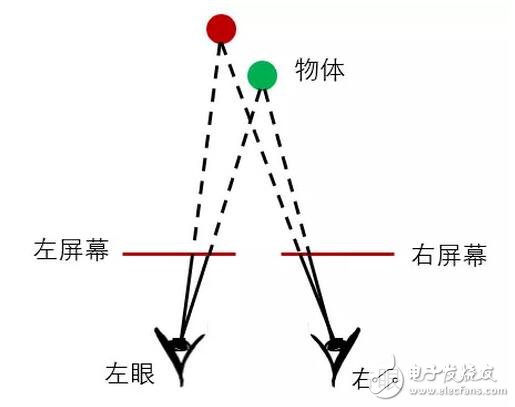
Left and right eye parallax in VR
Why is the angle of view not the bigger the better?
The field of view is the main indicator of VR manufacturers' promotion in the market, and basically the larger field of view is the highlight of their products, so that consumers think that the larger the field of view, the better. But is this the case?
Let us first look at the field of view of the human eye. The picture below is the field of view of the human eye. The human eye has a comfortable field of view of approximately 60 degrees, and the B and C regions in the picture represent the comfortable field of view of the left and right eyes, respectively. Within this range, a clear image can be seen without the human eye moving or rotating slightly.
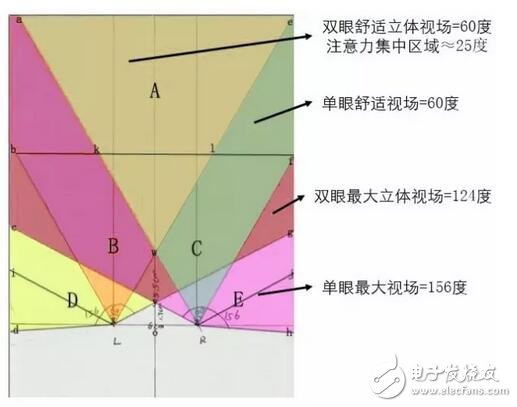
Human eye field of view
The area where the binocular fields overlap, that is, the area that can accurately determine the distance of the object, is about 60 degrees when the human eye does not rotate. We call it the binocular comfortable stereo field. This area can reach 124 degrees if the eyes rotate. The ultimate field of view that can be achieved with a single eye is approximately 156 degrees.
The ultimate goal pursued by VR glasses is to completely restore the true perspective of the human eye. So from this level, the angle of view is indeed closer to the field of view of the human eye (one degree 156 degrees).
But don't forget that the increase in the field of view also requires a simultaneous increase in image resolution. When we watch the real world, the delicateness of the picture is infinite, and when we use VR glasses, a large number of products are still using FHD or 2K resolution screens, far from reaching the limit that our eyes can reach. Resolution.
The principle of VR glasses is the same as that of a magnifying glass. When you zoom in on the screen 10 times and 20 times, the actual resolution you see is also reduced by 10 times and 20 times. It is also the VR products currently on the market. The "graininess" and "window window effect" of people who criticize. If a VR glasses want to have a large angle of view, you need to increase the magnification of the lens, but the screen "screen" will be seen more clearly.
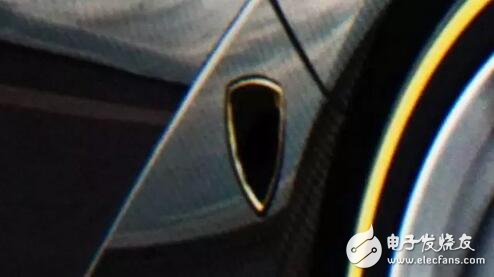
VR's "window effect"
The reason why VR glasses pursue a larger field of view is that they want to be closer to the actual field of view of the human eye and increase immersion. However, under the limitation of the existing screen resolution, a larger angle of view means a more serious screen window effect, but the immersion is lost. So the field of view is not as large as possible, but rather needs to be designed according to the resolution of the screen, making a trade-off between the field of view and the actual resolution.
Huawei has done practical tests when designing lenses: when the field of view of VR glasses is greater than 85-90 degrees, we will have a more obvious immersion; when the angle of view is between 90 and 120 degrees, people actually The difference in the perceived angle of view is not obvious; when the angle of view is greater than 120 degrees, people's perspective perception will have a more obvious improvement. Therefore, VR with a viewing angle of less than 80 degrees can only be used as a simple viewing device, but can not bring true immersive VR experience; a few VR integrated machines with screens can achieve more than 120 degrees of experience, but the price Relatively high. Since the human eye's perception of between 90 degrees and 120 degrees is relatively inconspicuous, we believe that 90-100 degrees is an ideal range of mobile VR field of view, which can better balance the field of view and actual resolution.
After finishing the field of view, the next step is to match the resolution. Usually we pay attention to the screen resolution or pixel density (PPI, Pixel per inch) when purchasing electronic products. In the VR product, because the screen has been enlarged by the lens, simply comparing the resolution of the screen cannot fully explain the delicateness of the VR product. We usually calculate the number of pixels included in the unit angle based on the screen resolution of the VR product and the lens field of view, Pixel per degree, PPD. This data can more directly reflect the actual viewing resolution of the screen after being magnified by the lens.
The table below compares the actual resolution of several VRs.
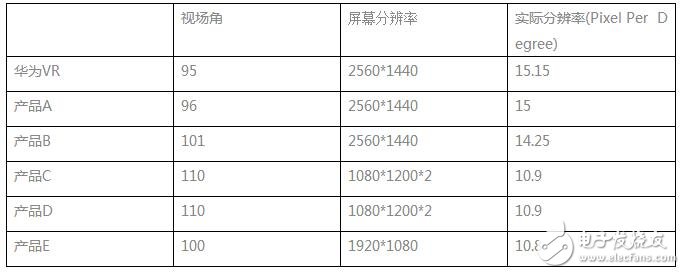
It can be seen that in the current market where the VR screen resolution is substantially the same, the larger the field of view angle, the lower the actual viewing resolution. Huawei VR comprehensively considers the angle of view and resolution factor, and chooses the lens angle of view of 95 degrees. At this angle, the graininess can be controlled to a lower level while achieving a better balance while satisfying the immersive experience. With the Mate 9 Pro, Huawei VR can get the highest actual resolution (PPD) of the current mainstream VR glasses.
Adapting the screen's VR is a good VR
Huawei VR is currently equipped with Mate 9 Pro, Mate 9 Porsche design, P9 Plus three of these three 5.5-inch models. Many VR products on the market often promote the adaptation of all mobile phones, claiming to be sized from 4.7" to 6.3". A VR can not be said to complete the adaptation by plugging in various types of mobile phones. This "fit" does not consider the size of the screen and the viewing range of the lens, and is purely "floating".
The optical characteristics of a VR spectacle lens are fixed, so the range of light that can be received by the lens is fixed in a fixed structure. Simply put, a fixed lens can only see a fixed-size area. A carefully crafted VR glasses, the optical design of the lens must start from determining the size of the display screen.
From the following figures, it is obvious that many VR products are so-called adaptation problems.
For a mobile phone with a small screen, you can already see the border of the mobile phone through the lens, and some can even see the complete mobile phone. This kind of "fit" talks about immersion; on the other hand, for a mobile phone with a large screen, The lens can only see a small part of the screen, but the content is displayed on the entire screen. This kind of "fit" is probably only a kind of feeling of watching a movie with a telescope. Only for the optical design of the screen size, the lens can make the most use of the display area on the screen, minimize the graininess, increase the angle of view, and at the same time do not see the phone frame and "wear".
At present, many VR products on the market simply pursue the gimmicks on the publicity, and claim to support all screens. Of course, these VR products themselves have "congenital deficiency", they can not be optimized for a specific mobile phone, only some general-purpose optical lenses can be selected, and there is no targeted adaptation and optimization process.
Huawei VR belongs to the "brothers" of Huawei mobile phones. It is natural to know exactly what kind of optical design the "brothers" need. Therefore, the lenses of Huawei VR were originally designed according to the screen size, and the subsequent design was based on this. This ensures that the optics and the screen form the best match.
VR with clear lens is good VR
In addition to the angle of view and resolution, clarity is often an indicator that is easily overlooked. The definition here is not the degree of detail of the screen, which is more relevant to the resolution of the screen. The sharpness mentioned here is a pure lens optical effect.
In general, the center of a lens has the best image quality, and the quality of the image to the edge is worse. Therefore, how large the entire lens is capable of high-quality imaging is also one of the important factors determining the quality of VR glasses. It should be noted that in VR glasses, the human eye is constantly rotating. When we see the edge of the lens, the lens is also required to provide a sufficiently large clear range.
At present, many VR products on the market use lenses with diameters of about 35mm to 40mm. It is difficult to cover the range that the human eye is rotating. It is easy to see the frame of the lens. There is always a feeling of "peeping in the tube". .
In addition to the small aperture of the lens, the lens of these VR glasses usually has a clear area in the center, and the eye is slightly rotated to the side, which is a blur. The angle of view of the VR glasses is no longer sufficient, and the angle of view that can be seen is afraid. Only forty or fifty degrees, there is always a vague feeling.
There are also some VR glasses. When we aim at the center of the lens, it is still quite clear, but with a slight deviation, the picture is distorted and even blurred. When using this VR glasses, it is always struggling to find the clearest. That position, and often the left eye is found, and the position of the right eye is biased.
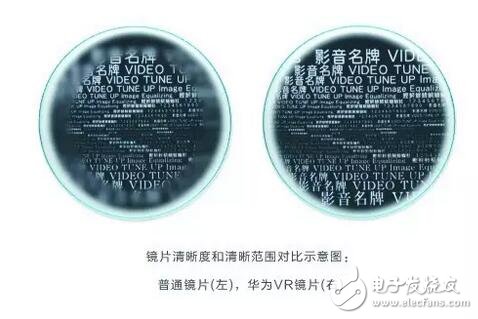
In response to these problems, Huawei VR specially selected oversized lenses with a diameter of more than 50mm, which will not be disturbed by the frame when viewed. At the same time, the lens of Huawei VR has been optimized for the clear range of the lens, especially considering the sharpness of the edge of the lens and the tolerance to wear deviation. With the special defocusing design, the clarity and clarity of the whole lens are made clear. The range has been greatly improved and the tolerance for wearing deviation has been increased. To put it simply, the clear picture range is larger and more in line with the human eye, which makes us look more happy. The larger the lens and the larger the clear range, the more the experience is doubled.
Huawei VR has uniquely optimized the design of various industry pain points such as field of view, screen adaptation, clarity, and clear range, and selected the best Japanese imported optical grade resin to create a strong sense of immersion. High rate, clear and comfortable VR lenses, giving you the ultimate and comfortable VR experience.
KNL1-100 Residual Current Circuit Breaker
KNL1-100 Moulded Case Circuit Breaker is MCCB , How to select good Molded Case Circuit Breaker suppliers? Korlen electric is your first choice. All moulded Case Circuit Breakers pass the CE.CB.SEMKO.SIRIM etc. Certificates.
Moulded Case Circuit Breaker /MCCB can be used to distribute electric power and protect power equipment against overload and short-current, and can change the circuit and start motor infrequently. The application of Moulded Case Circuit Breaker /MCCB is industrial.
Korlen electric also provide Miniature Circuit Breaker /MCB. Residual Current Circuit Breaker /RCCB. RCBO. Led light and so on .
KNL1-100 Molded Case Circuit Breaker,KNL1-100 Small Size Molded Case Circuit Breaker,KNL1-100 Electrical Molded Case Circuit Breaker,KNL1-100 Automatic Molded Case Circuit Breaker
Wenzhou Korlen Electric Appliances Co., Ltd. , https://www.zjmannualmotorstarter.com